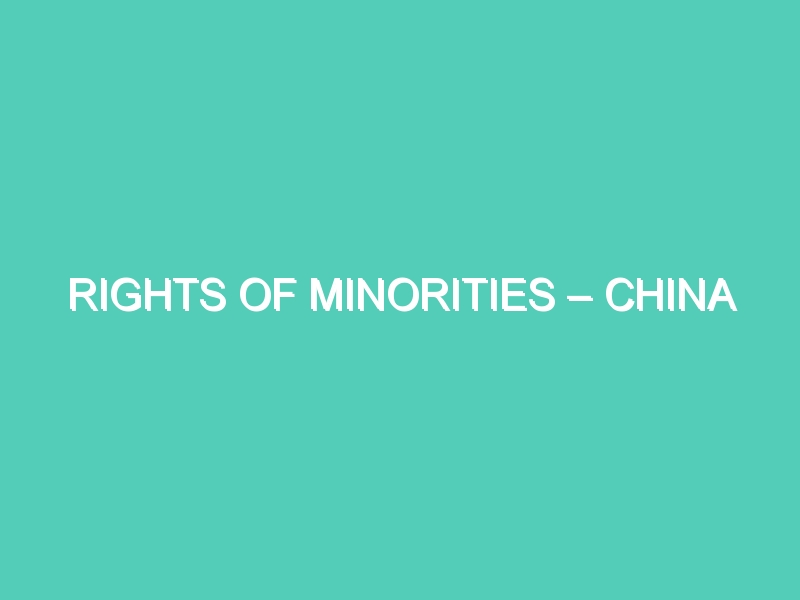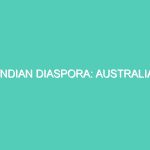CONFLICT BETWEEN OFFICIALS AND CITIZENS
China is one of the most populous country in the world, who is a home for more than 55 ethnicities which include the most talked communities- Han, Hui, Manchu, Mangols, Uyghurs and Tibetans. It is a well known fact that china has a complex relationship with its minorities and many of whom has been chaff under Chinese government[1]. Riots and unrests have been periodically seen in various regions of the country which includes Tibet autonomous religion, Inner Mongolia and western province of Xinjaing, however it is not a surprise that all such protest and riots have been suppressed by the ruling government.[2]
The relation between religion and state power in china has been contested for a long time the political relation with religious organization lead to an out roar from various sects of society however those thrives were curbed by the officials. Although religiously endowed people imitated a significant source of resistance for the apparent communal government’s rule, various sects of people came out against the idea of having upper hand of politics in religious propagation hence, many people from many sects and religion formed a secret society whose main aim was to remain aloof from the official control over religion.[3] Not only people showed their disagreement from government by taking part in such secret societies but they also came out and expressed their admiration to have religion and politics hand in hand still far away from each other’s influence, these uprising included peasant protest which inspired many religious devotions and local religion of china to stand against such atrocities.[4]
However, the tension between the communal government and religious devotionals rose during post cold war and globalization era, this tension lead to conflict which involved ethnic groups and the single party that is the communist party of china[5], because of the increasing conflicts in china, various international organizations approached to address this issue in different part of the world as ethnic issues in such a large and populous nation as china have been a serious concern for the international community as it could led to mass destruction.
UYGHUR – OPPRESSED MINORITY COMMUNITY IN CHINA
Uyghur is a Turkic speaking Muslim population who is a part of Altaic group of community and is amongst the oldest Turkic speaking people of central Asia, which has been spread mostly in the interior part of Asia.[6] The majority of Uyghur population resides in the north western part of china and a small number of such communities could be seen in other parts of central Asian republic The Uyghur are like Tibetans as they are suppressed and type cased as these people are often labeled as terrorist or as people who are against the ruling government of the country.[7]
The Uyghur are mainly a sedimentary village deviling people who live near valleys and low slope area of pamirs, Tien Shan which are mountainous region. Through the centuries Uyghur lost their political unity and after 19th C[8]. where they had a revolt against Beijing they saw a great downfall which lead to their social organization to be centered at a village level. Soon after getting autonomous region position in 1950, people of Han community began moving into the xinjiang province of china. This influx of Han population pronounced after 1990, and by the late 20th century Han community overrides the total population of Uyghur community.[9] Over the time the economic disparities and ethnic tensions grew between Uyghur and Han community which eventually resulted in the protest and violent outbreaks. One of the most violent outbreaks of all time between these 2 communities is July 2009, where nearly 200 people of Han community were killed and many were injured from both sides.
After these incidents Chinese authorities responded by taking strict actions against the people of Uyghur community. The government initiated the process to crack down Uyghur community of xinjiang province which included set up of spy cameras, check points and constant police patrols in Uyghur dominated areas.[10]
One of the most controversial governments undertaking was the indefinite detention of people from Uyghur community in political training centered which are heavily fortified buildings that were linked to the reeducation camps. On august 2018 the UN called upon china to put an end to such retention centers as these detention centers were against human rights law, however the Chinese government officials denied existence of such camps.[11]
SITUATION OF UYGHUR MINORITY COMMUNITY DURING PANDEMIC
In recent times china has been accused for increase in abuse of human rights of the Uyghur Muslims in its xinjiang province. And now after the spread of novel disease that is covid19 it has been received that there has been increase in the forced organ transplantation of the minorities Muslim communities to save the lives of infected Han population from covid-19[12]. According to the reports of the print and the wire Chinese officials has been sending thousands of Uyghur as laborers in manufacturing cells to keep its factories running during the evacuation of regular workers due to the lockdown in the wake of covid-19 outbreak[13]. In the month of February when the pandemic was at its peak in china more than 400 Uyghur youth were sent to different highly risk provinces of china to resume the stagnant work, in one of the interviews the head of world Uyghur congress said that “there is no guaranty that the youth which has been sent to different provinces for work will come home alive.”[14]
The UN has estimated about 1 million people of Uyghur community are being held in detention camps under unhygienic conditions which could lead to outbreak of covid19 in large scale in that region.[15] However, on the other hand the Chinese government has released an official statement where they mentioned about no new case of Corona virus in Xinjiang Region and in detention camps as situations are under control, although the world organizations are having skepticism about official statement.
CONCLUSION
Chinese government’s traditional approach to minority group became one of the reasons for the success of china’s nation building and it has been adjusted to serve the goal of modernization and development in last two decades. Though activists from ethnic groups criticized the Chinese government and its policies on ethnic minorities from a human right perspective Chinese government also used the same tactics to defend its position. One of the most powerful reason because of which the Uyghur Community of china is unable to reach out the world is because of the Communist form of Government, who is controlling each and every step of its citizens and other people as well.
Article Written By- Neha Virmani
Law Student–University of Petroleum and Energy Studies
(HRDI Work From Home Internship)
[1]Shuping Wang, “The People’s Republic Of China’s Policy on Minorities and International Approaches to Ethnic Groups: A Comparative Study” 11, IJMGR, 159-160 (2004) https://www.jstor.org/stable/24675260?seq=1
[2]Pit man B. Potter, “Belief in Control: Regulation of Religion in China” 174, China Quarterly, 317-337 (2003) https://www.jstor.org/stable/20058996?seq=1
[3] Shuping Wang, “The People’s Republic Of China’s Policy on Minorities and International Approaches to Ethnic Groups: A Comparative Study” 11, IJMGR, 159-160 (2004) https://www.jstor.org/stable/24675260?seq=1
[4] Clerrisa Sebag Morrisan, “How China distorts its minorities through propaganda”, BBC Culture, June 13th, 2017, https://www.bbc.com/culture/article/20131215-how-china-portrays-its-minorities
[5] Adam Zedan, Britanicca, https://www.britannica.com/topic/Uighur
[6] Pit man B. Potter, “Belief in Control: Regulation of Religion in China” 174, China Quarterly, 317-337 (2003) https://www.jstor.org/stable/20058996?seq=1
[7] Monika Chaurasia, “China struggles with religion and identity” The Sunday Guardian Live, Aug 17, 2017https://www.sundayguardianlive.com/opinion/10480-china-struggles-religion-and-identity
[8] Shuping Wang, “The People’s Republic Of China’s Policy on Minorities and International Approaches to Ethnic Groups: A Comparative Study” 11, IJMGR, 159-160 (2004) https://www.jstor.org/stable/24675260?seq=1
[9]Clerrisa Sebag Morrisan, “How China distorts its minorities through propaganda”, BBC Culture, June 13th, 2017, https://www.bbc.com/culture/article/20131215-how-china-portrays-its-minorities
[10]Monika Chaurasia, “China struggles with religion and identity” The Sunday Guardian Live, Aug 17, 2017 https://www.sundayguardianlive.com/opinion/10480-china-struggles-religion-and-identity
[11]Jewhrer Ilham,“China Says There’s No Risk of a COVID-19 Outbreak in Xinjiang Camps. Don’t Believe It”, The Diplomat,28th feb,2020 https://thediplomat.com/2020/02/china-says-theres-no-risk-of-a-covid-19-outbreak-in-xinjiang-camps-dont-believe-it/
[12] Editorial, “Coronavirus: Are China’s Uighurs being put at risk? “, Al Jazeera,https://www.aljazeera.com/programmes/thestream/2020/05/coronavirus-china-uighurs-put-risk-200514185744718.html
[13]Editorial, “Coronavirus: Are China’s Uighurs being put at risk? “, Al Jazeera,https://www.aljazeera.com/programmes/thestream/2020/05/coronavirus-china-uighurs-put-risk-200514185744718.html
[14] Editorial, “Coronavirus: Are China’s Uighurs being put at risk? “, Al Jazeera, https://www.aljazeera.com/programmes/thestream/2020/05/coronavirus-china-uighurs-put-risk-200514185744718.html
[15] Editorial “China Says There’s No Risk of a COVID-19 Outbreak in Xinjiang Camps. Don’t Believe It”, The Diplomat,28th feb,2020 https://thediplomat.com/2020/02/china-says-theres-no-risk-of-a-covid-19-outbreak-in-xinjiang-camps-dont-believe-it/



